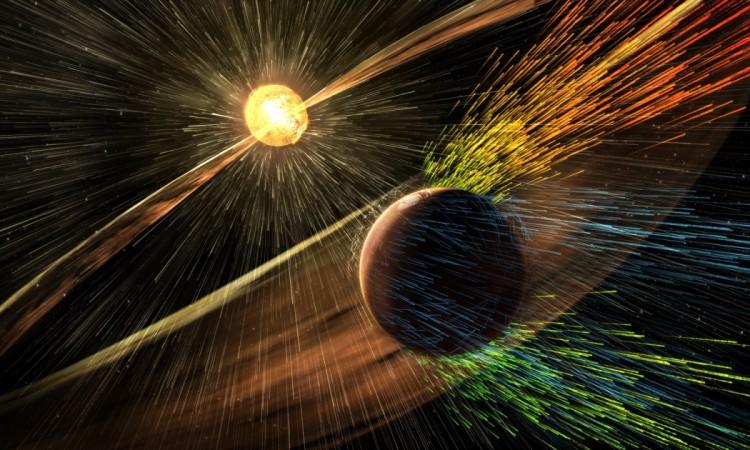
Planets orbiting too close to their stars are more prone to losing their moons, a new study has revealed.
Also Read: Giant exoplanets may grow even larger with time, researchers reveal!
Over the last two decades, more than 3,400 alien worlds (exoplanets) have been discovered outside our solar system. Astronomers have found that many exoplanets tend to orbit close to their stars — around 10 times closer in comparison to Earth's orbit around the Sun.
Studies conducted have found that moons that do exist around exoplanets, known as "exomoons", can be as big as the Earth, if not larger. An earth-sized exomoon could host life, if the exoplanet it orbits, exists within the system's Goldlocks Zone (the distance from a star where the temperature is warm enough for liquid water to exist).
Now, researchers from the Nanjing University in China have carried out a new study to find out more about exomoons.
Ji-Wei Xie, an astronomer, and co-author of the study, stated that the study aimed to finally find out the reason why so few exomoons have been discovered.
According to researchers, exomoons are hard to spot, and few in number, hence very little is known about their characteristics.
Hunting for exoplanets, close to their parent star, is easier for scientists. They often use the radial velocity method to look for exoplanets. The method involves searching for ripples in a star, caused by a planet's gravitational pull. The closer the expoplanet to its star, the more noticable are the ripples.
Another method used is the transit method, which detects any temporary dimming of a star as a planet passes in front of it. The closer the planet, the more noticable is the dimming.
Planets that orbit close to their stars are also found to be more exposed to radiation, when compared to planets located at a greater distance. This also means that the atmosphere on these exoplanets is likely to be destroyed by the intense radiation in a process called photo-evaporation.
"Such 'photo-evaporation' could, in principle, also make the orbits of moons around those exoplanets unstable," Xie was quoted as saying by space.com.
Xie, along with his colleagues, wanted to see what impact a star had on exomoons. They used the example of an ice giant like Neptune (14 to 20 times more massive than Earth) to run a simulation.
Each of these simulated ice giants orbited a star at a distance 10 times closer than the Earth orbits the Sun. These planets each started off with around 500 moons: Researchers wanted to see what would happen to these exomoons if the total mass of the planet diminshed by half, over a span of time, due to photo evaporation.
Researchers found that the exomoons were majorly affected, as the loss of planetary mass also resulted in diminished gravitational pull, which resulted in some moons' orbits becoming more oval, while others simply drifted away due to the lack of gravity.
"The simulations left few or no moons around the [exo]planets," Xie said.
A quarter of the moons left their planetary orbits completely, becoming planet-like bodies that eventually orbited the local star.
Some moons even escaped their systems entirely, becoming "rogue planets" that float through a galaxy. More frighteningly, nearly half the moons in the simulation, collided with the exoplanet.
In cases where the moons were much larger than the Earth, they were found to be even more unstable, and ended up colliding with each other, the research found.
"All in all, these findings can help guide future searches for exomoons," Xie said.
"For instance, their findings suggest that exomoon hunters should avoid exoplanets that are very close to their stars. This holds especially true for red dwarf stars, which are luminous with X-rays that enhance photo evaporation," he said.
Around 70% of the stars present in our galaxy are red dwarves and are found to be 50 times dimmer than the sun. Also many planets, orbiting red dwarf stars tend to be tidally-locked. That means one face of the planet would perpetually be in the light, while the other would always be in darkness, and hence freezing.
"Our findings would suggest that there would be fewer habitable moons around red dwarfs due to the photo-evaporation effect," Xie concluded.









!['Had denied Housefull franchise as they wanted me to wear a bikini': Tia Bajpai on turning down bold scripts [Exclusive]](https://data1.ibtimes.co.in/en/full/806605/had-denied-housefull-franchise-they-wanted-me-wear-bikini-tia-bajpai-turning-down-bold.png?w=220&h=138)



